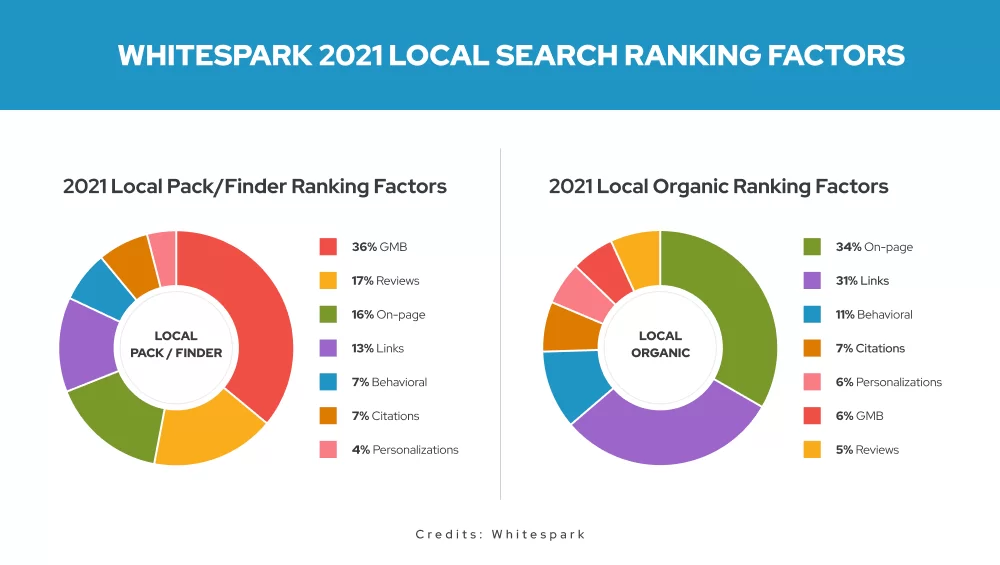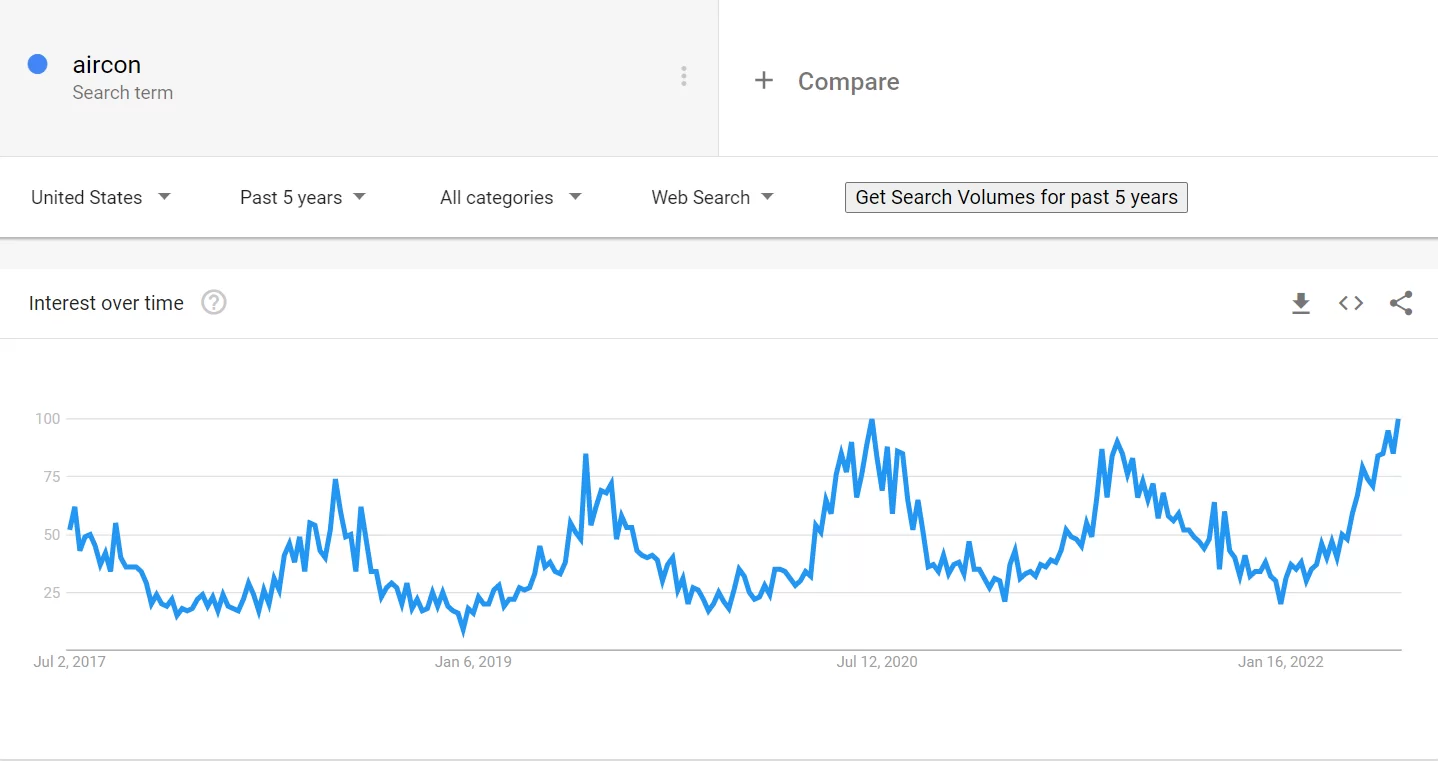
We can never understate the relevance of local SEO in today’s competitive residential home service market.
Knowing that Google optimizes SERPs results based on a desktop user’s IP address and a mobile device’s geolocation, you’ll lose a chunk of precious prospects unless you optimize your business’ website to appear in local listings.
To this end, local SEO tools are your strongest artillery.
Local SEO tools can improve your online presence which further engages your target market. It can support your efforts when tracking your ranking or performance, peeking into your competitor’s strategies, and developing optimized keywords.
In this article, we’ll share tips on how you can dominate local SEO and list the best local SEO tools to help you grow.
How to Win Local SEO
Winning at local SEO relies on a myriad of signals. Since the public has no access to Google’s local search algorithm, it can be confusing where we must dedicate our efforts. So paying attention to all factors will give your business a holistic local SEO.
As an increasing number of businesses turn to local SEO, SEO search ranking have become harder, but not impossible. As the endeavor for competitive SERPs ranking increases, so should our understanding of how to dominate local SEO.
Local SEO domination should address 5 questions:
1. What is the most important factor in local search ranking?
Ranking in local search comes in two separate categories: local pack and localized organic SERPs. If you want to fare better in your local search rankings, your goal must be to land the top spots in both varieties.
But what factors are at play that influences local packs and local organic SERPs? The quick answer is, nobody knows.
Google, being Google, keeps its local search ranking algorithm under wraps. But data in 2021 courtesy of Whitespark’s survey outlined the 7 top-most factors for both local pack and localized organic, as shown in the image below:

2. How will GBP help me improve my rankings?
Google Business Profile, formerly known as Google My Business, is the first step to local search success. GBP is a helpful tool for businesses that want to leverage a location-based strategy as it can increase local exposure.
For a residential home service business, it can be a struggle to compete with household names that rely on heavy advertising and brand recognition. It’s local SEO that helps you edge them out in your community.
By optimizing your GBP you increase the chance of ranking in local searches. However, your GBP efforts must work in tandem with on-page and off-page strategies for the best results!
3. What exactly is a location page?
Location pages, a.k.a. local landing pages, are webpages in your domain used to highlight the geographic aspect of your business for customers. These are especially important for service area businesses like residential home services as it lets people know the areas where you operate.
As much as it is relevant to know what location pages are, it’s also important to know what it isn’t. Location pages complement local SEO. While local SEO uses geographical markers to target specific audiences, location pages use relevant long-tail keywords that help your business appear in location-specific queries.
Essentially, location pages are useful for ranking in localized organic SERPs.
4. Is it worthwhile to spend time on business listings and directories?
Yes. If you don’t set up your business listing on Google Business Profile, you can’t expect to rank in local packs. By then, the most you can be is bagging the top spot in localized organic SERPs, but even that isn’t enough for a holistic local SEO approach.
Establishing your business listing is a must. Moreover, updating directory information helps people find you better and gain a better understanding of what you offer.
5. Am I verified on Google Local Service Ads?
If you haven’t yet verified your business and set up your Google LSA account,
stop reading and go do that right now. I’ll wait. Not only will you garner the top
position in search results, but conversions are exponentially better than
traditional PPC.
You will be required to verify your company to Google in a number of ways,
you gain the legitimacy and coveted positioning. Paying close attention to LSA
and responding quickly to inquiries will help you appease the Google Gods.
Answering these 5 questions are helpful ways to tip the scale toward increasing your local SEO positioning. Couple those above with local SEO tools that further leverage your business and a local SEO expert to lead you in the right direction, and you get a trifecta that secures local SERPs ranking success.
Best Local SEO Tools
1. Google Business Profile
It’s no surprise that Google Business Profile (formerly Google My Business) takes the top spot for the best local SEO tools. Designed, owned, and controlled by Google, it’s your first step in ranking on the local packs. The beauty of GBP is that it outlines every information that customers need to know about your enterprise. Whether that’s your location, address, or phone number — a single click is all it takes.
It’s a good tool to compare businesses, discover new competitors via the local pack ranking, and reply to customer reviews. The “book an appointment” option that Google integrated is useful to encourage listing engagement.
Below are best practices to implement on your GBP:
- Upload relevant business media (photos and videos)
- Integrate a button for requesting a quote
- Enable appointment booking
- Reply to reviews
- Take advantage of Google Posts
2. Google Ads Keyword Planner tool
According to research, a staggering 76% who search for nearby businesses visit them within the day. With that in mind, working on your residential home service business’ online presence is a must and Google Keyword Planner can help with that.
Google Ads Keyword Planner boasts several features that can help with your local keyword research. That is, discovering keywords relevant to your industry, learning the local search volume data, and determining what sorts of language your targets use.
In other words, it can help you speak to the dog in the language of the dog about what the dog cares about. Here are some things to remember about Google’s Keyword Planner tool:
- Monthly search results are rounded to the nearest volume which means the numbers give the idea but aren’t as accurate as paid tools
- They use “buckets” to group keywords by traffic volume so some traffic volume values in Keyword Planner may differ significantly from real traffic volume
- Only 35% of the keywords are shown among the most trafficked terms which mean companies can miss out ranking on other important keywords
3. Google Search Console
The Google Search Console (GSC) is your very own Google companion tool to let you know how “Google-friendly” you currently are. You may use the tool to check which webpages are indexed, what keywords you’re ranking for, which of your webpages are ranking, and how mobile configuration errors.
One really desirable feature of GSC is that it allows you to see how many clicks and impressions you get. This is especially useful for optimizing meta titles and meta descriptions to maximize your Click-Through Rate (CTR).
GSC isn’t a standalone tool for your local SEO efforts. You’ll need to use it hand in hand with other Google-provided instruments the Keyword Planner and Analytics to streamline your local SEO efforts.
4. Google Trends
Some keywords fluctuate in popularity depending on the season. As the name suggests, this is where Google Trends comes through.
Google Trends is an SEO tool used primarily to observe keyword popularity and track season-triggered increases in search volume. Now how does this help local SEO for your residential home service business? Check the image below:

In the past 5 years, you can see a pattern in how the search volume for the term “aircon” fluctuates annually. As shown, it peaks during summer and dips during the onset of the Ber months.
You can use Google Trends then to generate more locally relevant long-tail keywords that can increase your localized organic ranking through a “freshness” angle.
Here are other ways Google Trends can help you:
- Generate peak season content to grow traffic
- Take advantage of the hottest topics
- identify niche topics by region
- Google Trends Competitor Comparison
5. Growthbar
Starting off the third-party toolset for local SEO, we have Growthbar. This is a low-cost tool that you can use as a dedicated app or a chrome extension.
Growthbar is helpful when tracking the highest-ranking keywords of a website which can help augment your local keyword research when you do a competitor analysis. Moreover, you can check a competitor’s domain authority so you know what efforts you need to outrank them.
6. Georanker
Georanker is particularly useful for residential home service businesses that have multiple locations across the country. The tool displays heat maps where a website ranks high to reinforce any geo-specific local SEO efforts you implement.
So if you observe weak ranking in one of your branches say in Montgomery, you may want to dedicate more time to improving their local rank positioning.
7. Yext
Yext is a powerful third-party tool that automatically audits your business directory listing. Any inaccurate information can be replaced as needed. Moreover, the software helps identify listing voids you can fill out to further augment your local SEO efforts.
One particular feature of Yext that stands out is its Review Monitoring attribute. This helps businesses track and reply to reviews from different domains in one dashboard so you can streamline the process and save more time.
8. Semrush Position Tracking Tool
Like GSC, SEMrush’s Position Tracking tool helps track your website’s ranking on certain keywords. However, this tool takes it up a notch by also targeting the type of device used and geographic location — which is helpful for local SEO.
You can use the Position Tracking tool to compare your overall performance with that of competitors so you can adjust accordingly.
Apart from the cap on the number of keywords you can track, this is one of those must-haves local SEO tools.
Secrets Revealed (in Acquiring Customers)
Local SEO tools are mere stepping stones that help your success. In reality, you can still attempt to dominate without them, albeit it will take more effort on your part. Below are the trade secrets and good practices for acquiring more clients in local SERPs!
Update your local listing’s relevant directories
Your GBP is the face representing your business in local packs. Updating your listing’s relevant directories like the NAP (name, address, and phone numbers) may be the nudge your potential customers need to book a call. Providing other information may also spell the success of your local SEO.
Claim Your Local Listing
Conversely, if you haven’t made a Google Business Profile yet, you might want to start now. Alternatively, businesses that have been in operation for several years probably have a local listing already only waiting for a claimant.
Schema.org Business Markup
Schema markups don’t necessarily improve your local SEO. But they’re effective tools to improve your listings UI and CTR. Adding schema markups on your webpages will help you produce rich snippets where you can integrate your rating, stars, etc.
More Positive User Reviews
Google is cool with inviting people to give you reviews. So it would be helpful if you could urge current and previous customers to express their thoughts on your business. Higher reviews mean better ranking potential.
Correct Aspect Ratios and Image Sizes
This is a pitfall of most businesses especially if they’re trying out Google Posts for the first time. Using accurate aspect ratios will support your UI and CTR.
Here is a quick guide:
- Profile photo
Recommended: 250 x 250
Minimum: 120 x 120
Aspect Ratio: 1:1
- Cover photo
Recommended: 1080 x 608
Minimum: 480 x 270
- Profile photo
Recommended: 1200 x 900
Minimum: 400 x 300
Aspect Ratio: 4:3
SERP Display: 230 x 130
Desktop Display: 404 x 303
High-Quality Content
Last but not the least, your localized organic SERP ranking should be prioritized as well. According to Whitespark, on-page SEO matters most for organic rankings. With that in mind, make sure every piece of content you publish online adds value to your readers. This improves the trustworthiness of your site in the long run, which may translate into more leads and customers.
There’s more to local SEO than meets the eye, and this article demonstrates that ranking in Google is a holistic effort. Local SEO tools are mere weapons you wield that can help secure your victory.
If you’re looking for an expert to help you secure your local SERP rankings, Wizard of Ads™ can help you. Book a call.
- Ad Fraud: How Much of Today’s Internet Is Fake? - April 12, 2024
- Ad Relevance: The Secret To an Effectively Working Ad - April 3, 2024
- Say It The “Non-Traditional” Way - March 21, 2024
